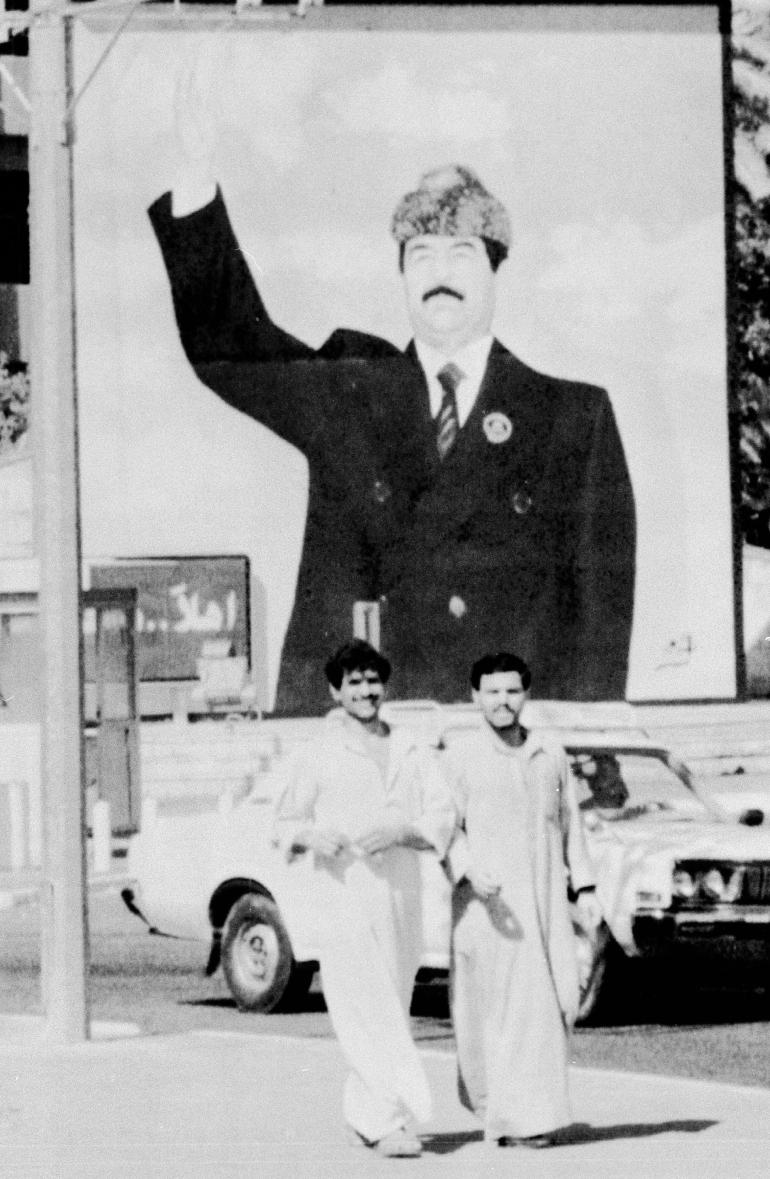More than three decades after they were pulled off a British Airways plane during a layover in Kuwait, former hostages used by Saddam Hussein as human shields want the British government to admit responsibility.
Flight BA 149 from London to Malaysia stopped in Kuwait City on August 2, 1990, a few hours after the start of the Iraqi invasion that led to the 1991 Gulf War.
The passengers and crew of the plane were detained by Iraqi forces while it was refueling in Kuwait.
After the passengers and crew were disembarked, the plane was destroyed on the runway. All passengers were gathered for a few days in a nearby hotel run by the Iraqi General Staff, then transported to Baghdad, where they were used as "human shields" in strategic locations.
One of the British children released by Saddam Hussein after international mediation (Reuters)
A new British book titled "Operation Trojan Horse" says that London used Flight PA149 to send nine intelligence officials to Kuwait, and was aware of the danger to civilians.
The book's author, Stephen Davis, explains that London had received information from American intelligence informing it of the Iraqi invasion.
He adds that the control tower was refusing to land all other flights that night.
A number of passengers and crew members (367) spent more than 4 months in captivity, and were placed in potential targets for the Western Alliance.
One of them, Barry Manners, 55, who was traveling with his friend at the time to a family meeting with his partner in Malaysia, says the "plot of silence" around these events has undermined his confidence in the authorities.
"It is contrary to the values we have been taught and to the very essence of Western societies," he said.
He added, recalling his family, that he was afraid that the jailers would be ordered to execute the prisoners.
Huge mural of Saddam Hussein in central Baghdad after the invasion of Kuwait in 1990 (Reuters)
gift for Saddam
After 4 months in captivity, Manners was able to return to London, but he suffered from psychological problems after the death of his companion in 1992.
For her part, Margaret Hearn, 65, remembers that a picture of her two young children was crying in captivity, and gradually boredom replaced fear, and Hearn was transferred from Kuwait to Basra, then Baghdad, and then to two places of detention in the desert during 5 weeks of captivity.
She remembers hostages befriending their guards by playing soccer in stark contrast to the horror of violence, mock executions, and deprivation some have been subjected to, according to the book.
"We were just a gift to Saddam," she said. "I managed to get over the ordeal by putting all of this in a box so that I would never look at it again," stressing, "I don't want to feel this kind of fear at all."
Richard Balasobaramian, a 49-year-old cardiologist, was placed under house arrest for two weeks in a hotel in Kuwait, and because he belongs to a family half Malaysian, he was able to take advantage of the evacuations organized by Kuala Lumpur after two bus trips that took about 20 hours in the stifling desert heat.
"It was surreal, scary, as if you weren't there, and we felt so guilty that we left some behind," he says.
He continues, "I lost my youth in Kuwait, and I feel even more anxious; I lost the joy and indifference I used to have."
intelligence agents
According to the author of the book, senior British officials bypassed traditional channels to send intelligence agents on board, and he said that a two-hour delay in take-off from Heathrow Airport, due to air conditioning problems, allowed these British agents to board at the last minute.
He added that then-Prime Minister Margaret Thatcher lied to Parliament, while British Airways threatened a number of crew and passengers to stifle the case.
The British Ministry of Defense and "British Airways" denied the accusations.
In 2003, the French judiciary ordered "British Airways" to pay 1.67 million euros to former French hostages, saying that the company "seriously failed to fulfill its obligations" to passengers when it allowed the plane to land.

